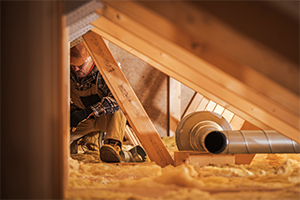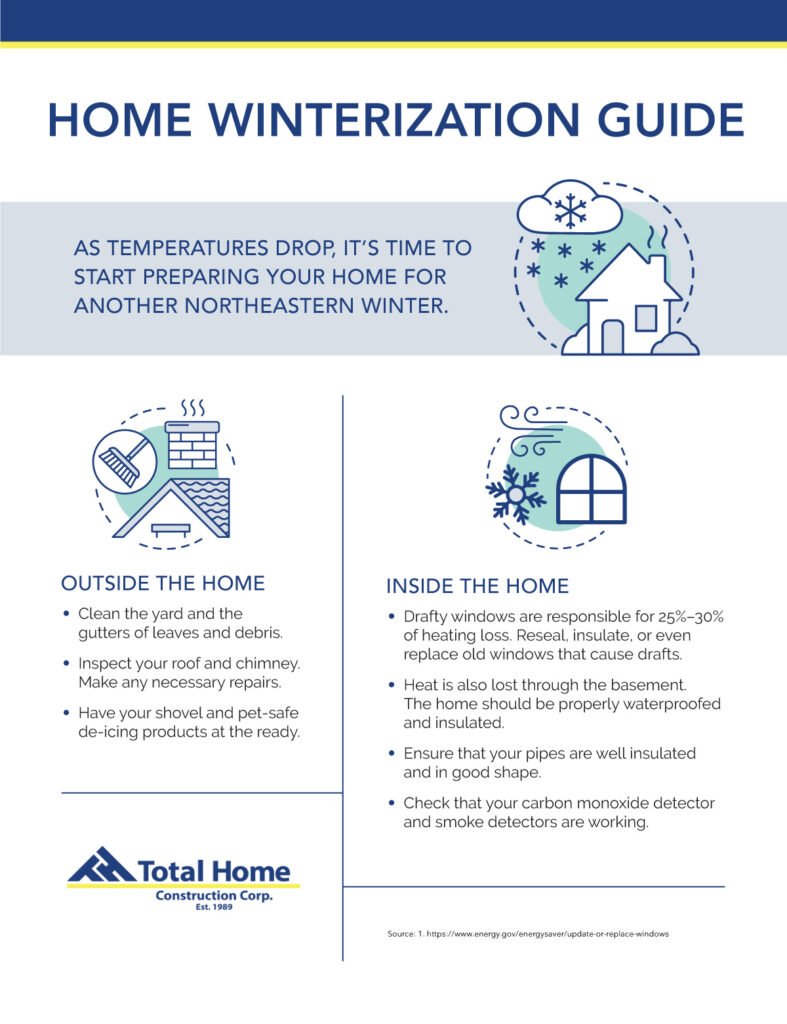The unprepared homeowner can face many problems throughout the winter. Winterizing your home will help you avoid damage and regrets. Use this guide to learn how to prepare the home for winter.
Winterize the Exterior of the Home
The Roof and Chimney

Regular roof maintenance is essential regardless of the climate you live in. Don’t wait until you spot leaks or damage before giving your roof some attention.
- -Clear away debris and clean your gutters.
- -Check for weak spots and damage, or have the roof professionally inspected.
- -Replace any missing caulk or loose flashing.
- -Make note of any trees or branches that may need to be trimmed away from the house.
- -Inspect your attic to ensure it has proper ventilation and insulation.
- -Clean the chimney and fireplace.

The Landscaping
It will be a while until we’re able to fully enjoy our yards and landscaping again. Here is how to prepare it for the cold months.
- -Rake up any leaves or debris.
- -Cover and store patio furniture.
- -Have your shovel, snow blower, or snow removal company’s phone number at the ready.
- -Purchase a stock of deicing material like pet-safe salt, sand, etc.
Prepare the Interior
A safe, cozy interior is a priority during winter when we’re stuck inside. Go through the following areas to check for issues.
Pipes and Plumbing
Inspect the pipes in your house for leaks to prevent bursting pipes. A plumber can help with any necessary repairs, including boosting insulation.
Windows and Doors

Drafty windows and doors could be why you’re set for a long chilly winter. When the deep freeze sets in, your home will lose valuable heat.
Did you know drafty windows are responsible for 25%–30% of residential heating energy use? Often the culprit behind drafty windows is a weak seal between the framing and the structure.
You have a few options to minimize the cold air coming in. An insulating film is a budget-friendly solution to boost insulation for drafty windows. Storm windows and doors are a great option in cold and wet climates. You can also weatherstrip your windows and doors to seal the gaps between window structures and the fixed framing. This is an effective way to seal the cracks and prevent cold air from infiltrating inside. Recaulking the interiors and exteriors of drafty windows and doors will also tackle some leaks.
But if your windows are drafty, the best way to keep your energy bill down is to consider replacements.
The Basement
Basement heat loss accounts for 15%–30% of the annual heat in a two-story house. The percentage is likely to be much higher in single-story homes.
Integrating a waterproofing plan into your winter checklist helps to improve efficiency. The modern basement is a dry, comfortable and useful space
Air Quality
Check that your smoke detector and carbon monoxide detector are working properly. Replace the air filter in your HVAC system. If your furnace hasn’t been inspected in a while, don’t wait until it’s freezing to do so.
Be Proactive About Winterization
Winterize your home with a proactive mindset to address all the critical areas of the home. The last-minute rush is often a formula for catastrophe. Remember, most professionals are booked up during winter. Contact Total Home Construction for the best winter home renovation projects in Long Island, N.Y.











